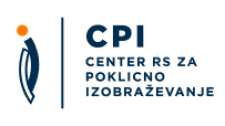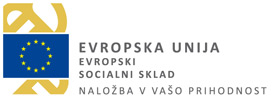Diplomirani ortotik in protetik (vs)/diplomirana ortotičarka in protetičarka (vs)
Selected qualifications
| Name of qualification | Name of qualification: Diplomirani ortotik in protetik (vs)/diplomirana ortotičarka in protetičarka (vs)Add to comparison |
|---|---|
| Translated title (no legal status) | Translated title: Bachelor of Applied Science Orthotist and prosthetist |
| Type of qualification | Type of qualification: Professional bachelor's degree |
| Category of qualification | Category of qualification: Educational Qualification |
| Type of education | Type of education: Professional bachelor's education |
| Duration |
Duration of education:
3 years
|
| Credits | Credits: 180 credits |
| Admission requirements |
Entry conditions:
|
| ISCED field |
Field:
Health and welfare
|
| ISCED subfield | subfield: medical diagnostic and treatment technology |
| Qualification level |
SQF Level:
SQF 7 |
The qualification holder will be able to:
(general competences)
- observe moral/ethical principles and values,
- communicate information on the hygienic and technical state of the external and internal environment that affects human health; make suggestions and participate in the promotion of health,
- communicate orally and in writing within own professional field,
- communicate with professionals from own and other professions,
- work in an interdisciplinary team,
- undertake research in education and training in the orthotics and prosthetics field.
- demonstrate knowledge of technical terminology,
- make decisions autonomously,
- demonstrate self-criticism and critical judgement,
- arrive at professional conclusions,
- acquire and manage information and assess it critically,
- analyse, synthesise, manage and anticipate solutions and the consequences of events in the fields of rehabilitation, application, fabrication and social medicine activities,
- integrate knowledge and understanding in a professional manner,
- resolve problems in narrower and broader contexts (multidisciplinary team),
- participate in research in own field,
- integrate theory and practice,
- demonstrate knowledge of the scientific and theoretical foundations of the profession,
- demonstrate the ability to learn independently,
- use information and communication technologies in the O&P field,
- demonstrate responsibility for own learning and awareness of the importance of lifelong learning,
- demonstrate knowledge of the content and methods of O&P,
- undertake autonomous work after conclusion of the programme,
- obtain new knowledge in own field and monitor the development of the profession,
- communicate in a foreign language,
- adapt to new situations,
(subject-specific competences)
- understand the anatomical, physiological and pathological states of the locomotor system,
- participate as a member of a clinical team; occupy a position in the inspection and prescription of a technical device and give advice on the implementation of an orthosis/prosthesis, application and rehabilitation,
- provide assistance, observations and advice during appropriate inspections with regard to the preoperative, postoperative, medical and therapeutic management of an individual's needs in the case of prosthetic and orthopaedic devices,
- record and report to the rehabilitation team or colleagues on information regarding the patient's condition and family and formulate an opinion with regard to expectations and needs,
- communicate appropriately with the patient and the patient's family members,
- recognise significant clinical characteristics of the patient,
- formulate a prosthetic or orthotics design and select materials, components and technical devices,
- take a negative and carry out the measurements necessary for the fabrication and application of a technical device,
- modify the positive, the negative and the shape in order to ensure the optimal point of application and positioning of the orthosis/prosthesis,
- demonstrate knowledge of biomechanics of an orthosis/prosthesis and its function,
- carry out static and dynamic regulation; when necessary carry out preliminary training and the initial inspection,
- fabrication or supervision of fabrication of orthosis/prosthesis,
- provide advice in a team and participate as an equal member in the final inspection and evaluation of the functions of the device,
- instruct the patient or his/her family members on the correct application, use and maintenance of the device,
- participate in subsequent procedures and in the maintenance, repair and replacement of the technical device,
- recognise the need to repeat any of the above procedures/functions for the optimisation, adaptation and improvement of function,
- cooperate and consult with other colleagues involved in the patient's care and rehabilitation,
- supervise the work of subordinates,
- carry out assigned clinical and laboratory activities,
- use and maintain devices and equipment,
- maintain a safe working environment and procedures,
- supervise inventory and stocks,
- deal with staff problems,
- manage and control finances,
- store data suitably,
- ensure quality,
- purchase tools to increase productivity,
- cooperate with professional groups and with governmental and non-governmental organisations,
- participate in the planning and implementation of the healthcare system in the field of orthopaedic technology,
- supervise and provide education,
- give lectures and demonstrations to colleagues other professionals from the orthopaedic field and other interested groups,
- take part in the process of professional development,
- follow developments in the fields of orthotics and prosthetics,
- make a professional contribution with own knowledge and participate in the rehabilitation programme community,
- perform ongoing evaluation of own activities,
- participate in evaluation and research programmes,
- attend scientific/professional meetings, write and publish articles in professional journals.
Examination performance is scored as follows: 10 (excellent); 9 (very good: above-average knowledge but with some mistakes); 8 (very good: solid results); 7 (good); 6 (adequate: knowledge satisfies minimum criteria); 5–1 (inadequate). In order to pass an examination, the candidate must achieve a grade between adequate (6) and excellent (10).
In order to enrol in a higher year the student must have completed the previous year with proof of attendance in all subjects, completed all practical exercises and clinical practice and obtained the following number of credits for an individual year for enrolment in an individual year: for enrolment in the second year at least 51 ECTS credits from the first year. The student must have passed the following subjects from the first year: Biophysics, Basics of biomedicine, Anatomy and physiology with pathology, Chemistry and materials technology, Special biomechanics and Clinical practice 1. In order to enrol in the third year student must have obtained 60 credits from the first year and at least 45 ECTS credits from the second year. The student must have passed the following subjects from the second year: Assessment of motor system function, Prosthetics, Control and management of movement, Computing and fundamentals of CAD/CAM, Technical devices and Clinical practice 2.
Diplomirani ortotik in protetik (vs)/diplomirana ortotičarka in protetičarka (vs)
SQF 7
EQF 6
The Career path tab shows the possible career path within the selected qualification area, which is not the only one and is not mandatory. The actual transition between qualifications, which is determined by law, is defined in the Transition tab.
SQF 8 / EQF 7
Second-cycle master's study programmes (SQF level 8)
To complete their studies, students must meet all requirements for all subjects in which they have enrolled, and pass a diploma examination.
University of Ljubljana, Faculty of Health Sciences
URL
Awarding body URL:Upcoming event
International Conference: 10 years of Slovenian Qualifications Framework
International Conference: 10 years of Slovenian Qualifications Framework Brdo Congress Centre, Predoslje 39, 4000...
© Center RS za poklicno izobraževanje, 2018. All rights reserved
Sitemap General legal notice Cookie Policy Production: ENKI






